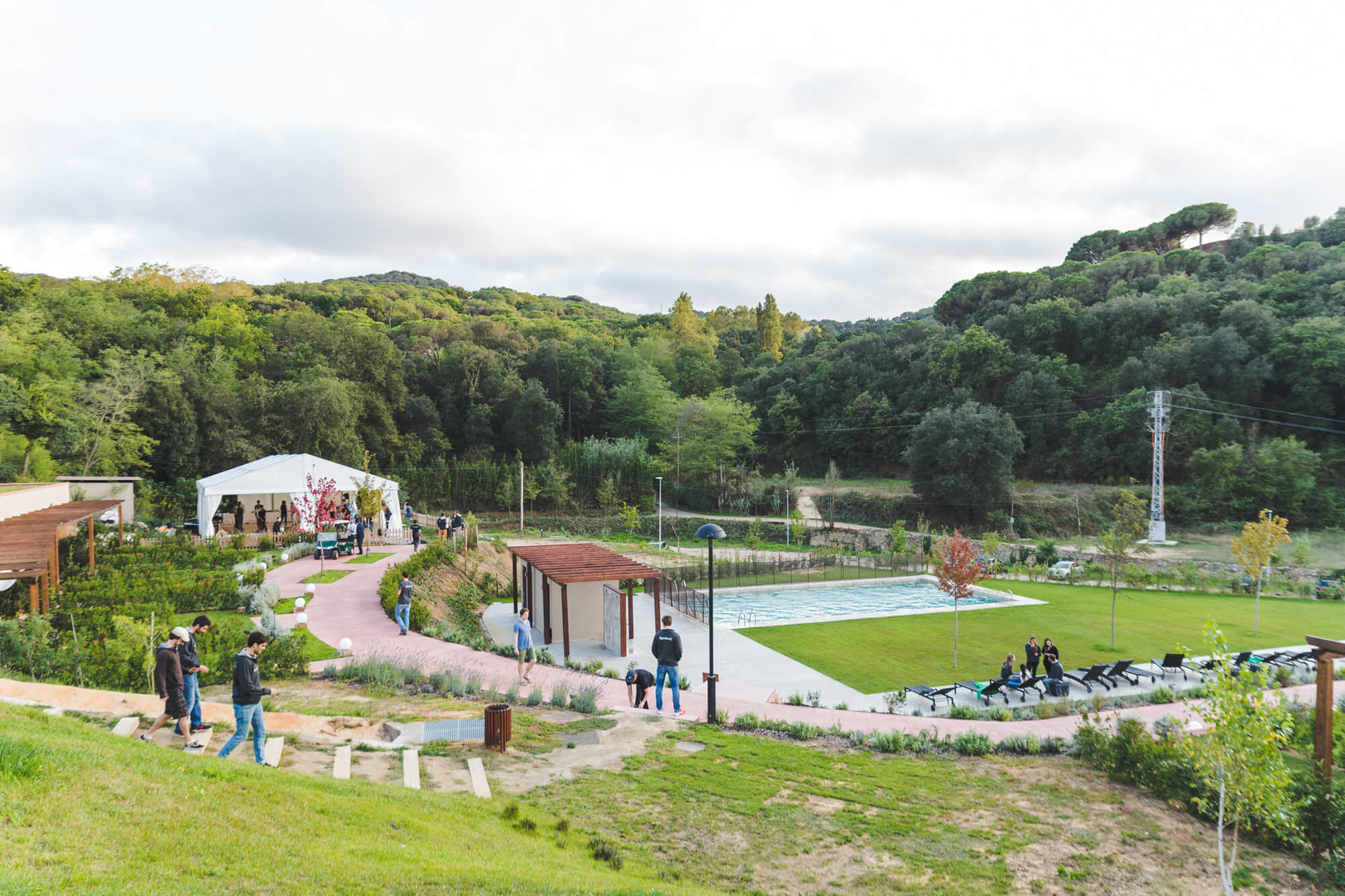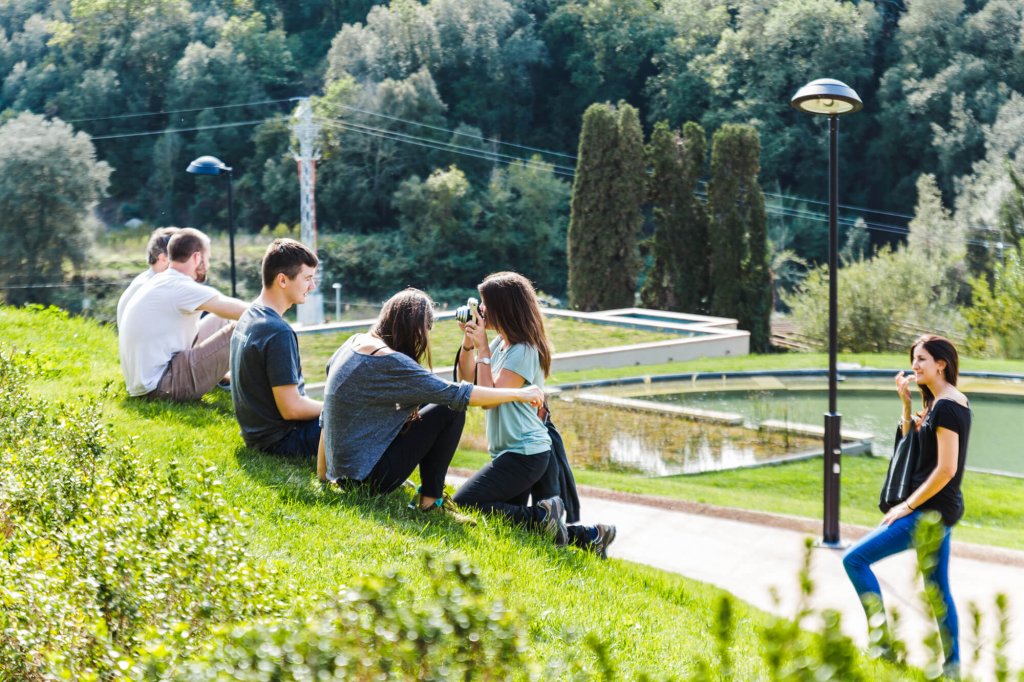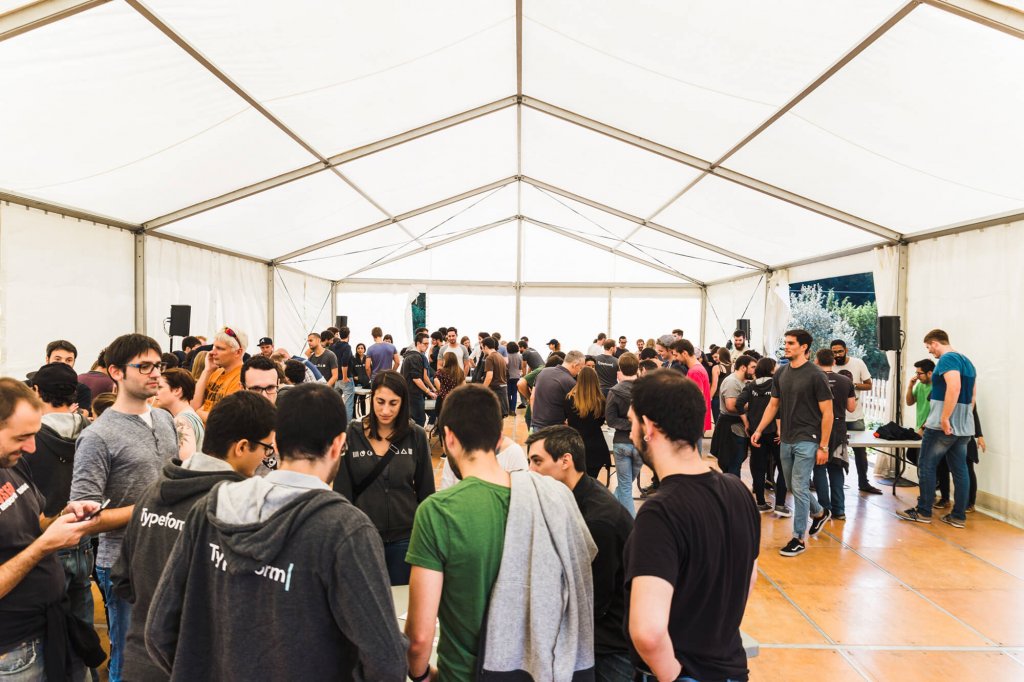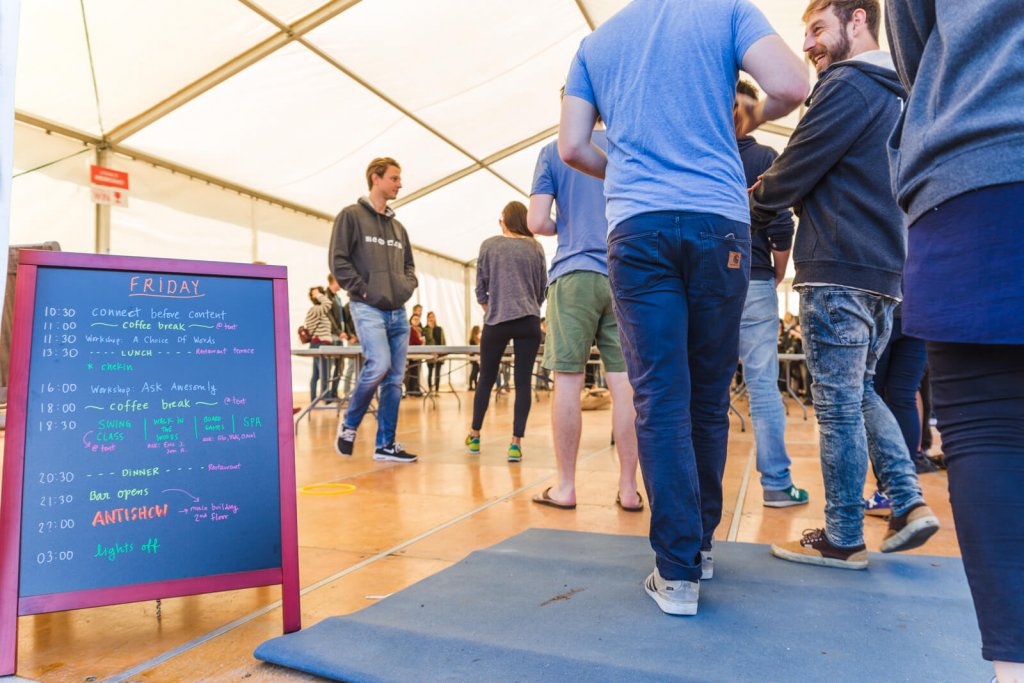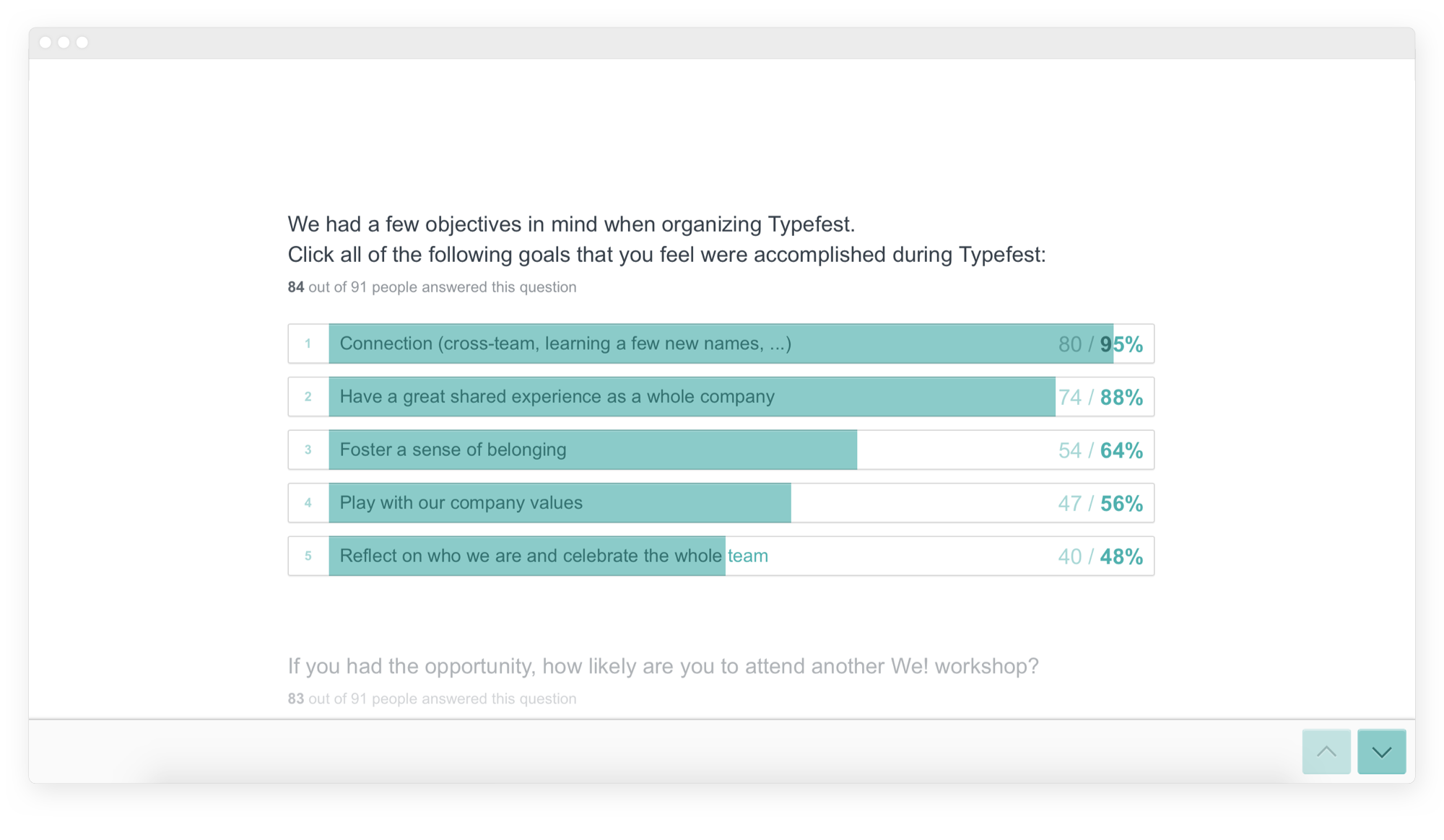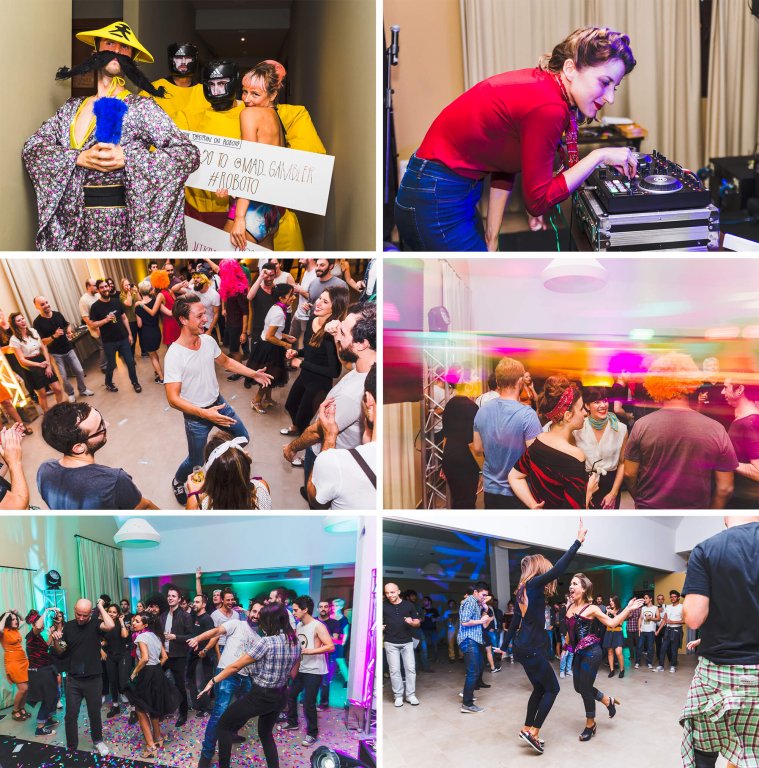Inside Story
What went on at Typefest?
Go behind the scenes on how we organized and carried out our first company retreat. <br>

When hundreds of Typeformers spent time in the hills of Barcelona, the plan for our first company retreat was to spend time together, play with our values, and basically have loads of fun.
But like everything in a fast-moving startup, the team didn’t have much time to organize “Typefest.” Actually, we had less than two months.
So after quietly freaking out, we put on our calm faces and tackled the beast with a one-bite-at-a-time mentality.
Which leads us to our first tip: plan your event in advance.
For over 100 attendees—and if you’re going to need a venue—begin planning at least 6 to 8 months in advance.
Ah, the venue.
How to find a venue
The venue was one of the most difficult things to pin down. Because we still didn’t know exactly what type of event we wanted to create.
Did we want to camp? Share big rooms with 17 other people? What options were out there? We knew we wanted nature, but we needed to stay close to Barcelona.
Camping sounded like loads of fun to some of us. But after asking people how they felt, we decided it wasn’t worth the huge effort.
We even consulted people on whether we should organize such an event because we love getting feedback.
But back to the venue. Many of the places we liked were already booked. So finding a place where 140 people could sleep comfortably was a massive challenge. We actually had to change the date twice because we couldn’t find a site. But we finally settled for an eco resort because it provided all the things we needed most:
- 25 minute bus ride from our offices—near the city but still out in the woods
- A rural look and feel surrounded by nature
- Comfortable, meaning good facilities, good service, and great food
- Different spaces for activities
- A spa (no, we didn’t really need this, but it was a great bonus!)
Tip 2: The venue sets the tone for your event, so choose wisely. A good fit will make the rest of your tasks easier.
Set a program
So, what was Typefest’s objective? Great question. And no one really knew for certain. So we asked fellow Typeformers, “What’s the purpose of the retreat?”
Tom, our VP of Engineering, pretty much summarized the main point:
Nice, but how on earth do you do that? We decided to look for someone to help us facilitate workshops and games.
So we contacted Chad Littlefield and Will Wise from We! to work with us on our company values and vision.
It could be seen as a risk to let outsiders work on these types of things, but we felt it was best to give the task to professionals.
And so during the weeks leading up to Typefest, Chad and Will interviewed managers, both CEOs, and staff members to better understand our company needs and soak up our culture.
Next, we started designing a program of activities and handling logistics to bring the whole thing together. Everyone around the office pitched in, and we ended up with a variety of activities such as board games, hiking, and even a Lindy Hop class.
And then came the “Antishow party,” where people performed silly sketches, had lip sync battles, showed off their DJ skills, and danced, and danced, and danced.
Our CEOs also surprised us with a real sumo match, superbly narrated by our Creative Director Alex.
Tip 3: let people participate so they feel like they’re building the event they want to have.
Communicate, communicate, communicate
With big groups, over-communicating logistics seems intuitive. But we found it’s better to find the right balance between repetition, and not withhold information.
So we used a typeform to communicate logistics and asked people to RSVP. And we left room for questions, since it’s inevitable to receive a few special needs from the group.
Then as the event date got closer, we sent everyone a PDF with the final itinerary, including a map of the venue, and highly-anticipated spa schedule. While we were at the event, blackboards kept people on schedule.
Tip 4: think about the best way to communicate with your group at every stage of the process (pre-, during, and post-event).
It’s always going to be challenging to keep everyone’s attention on the things they need to know. The objective is to run your event as smoothly as possible by minimizing dependency on the organizer.
Gather post-event feedback
Two days after the event, we sent out this survey with post-event survey questions to understand how things went, rate the quality of the event, and gather the main takeaways from participants.
It gave us a ton of ideas for the next Typefest and useful feedback on both what worked and what didn’t.
We scored high on logistics, but flunked the selection of workshops.
We even received love letters (I swear), and a cake from colleagues acknowledging the effort that went into creating the experience.
But we also got a ton of feedback that was—let’s put it this way—slightly difficult to handle. For example:
Critical feedback lets you prepare your next gig. It zooms in on what your team really needs.
Tip 5: You can choose the best speakers and the greatest facilitators in the world for your event. But if they don’t match your needs and company culture, people will disengage.
So what should you do?
Invest time in connecting with your team, have deep conversations with them, and identify needs in every area of the organization. Oh! And be grateful for all feedback you receive, especially the difficult stuff.
